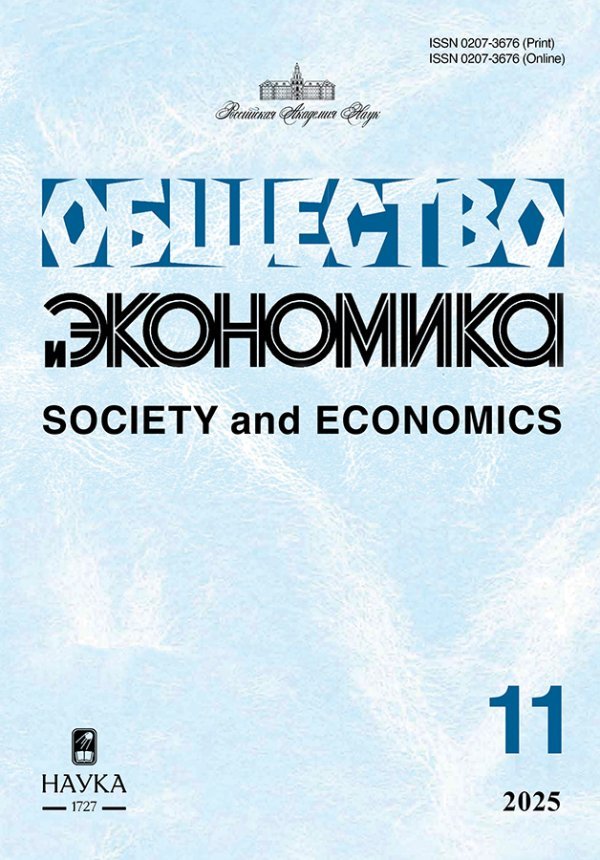“Justice Vs Efficiency” dilemma in the context of russia’s regional economic policy
- Authors: Kapkanshchikov S.1
-
Affiliations:
- Sevastopol branch of Moscow State University M.V. Lomonosov
- Issue: No 2 (2024)
- Pages: 104-124
- Section: REGIONAL DEVELOPMENT
- URL: https://rjsvd.com/0207-3676/article/view/673801
- DOI: https://doi.org/10.31857/S0207367624020081
- ID: 673801
Cite item
Abstract
Deriving the necessity of regional economic policy from the market failure concept, the author, using D. Friedman’s center-periphery theory, justifies the fact of excessive socio-economic differentiation among the regions of the Russian Federation, which has a hindering rather than accelerating effect on long-term economic growth. The clear division of Russian regions as parts of the “center-periphery-semi-periphery” classification based on the classification of spatial policy theorists by G. Cameron as non-interventionists, adapters, and radical transformers raises the question of the optimal degree of intervention by the Russian government in regulating territorial structure. The centerpiece of the article is the comparative analysis of two alternative approaches within the models of “territorial justice” and “economic efficiency” outlining the tools used in each of them. By uncovering the objective regularities of cyclical development that bring to the forefront one or another model of regional regulation and linking their use to the achieved level of economic development of the country, the author proves the inevitability of relying on a leveling model in Russia’s regional policy. However, to avoid the reproduction of social dependency of subsidized territories, there is an urgent need for close coordination of regional policy with structural policy, aiming both at achieving economic development rooted in innovations as opposed to, for instance, exploitation of natural resources.
Full Text
About the authors
Sergey Kapkanshchikov
Sevastopol branch of Moscow State University M.V. Lomonosov
Author for correspondence.
Email: kapkansv@mail.ru
Grand Ph.D. in Economics, Professor Department of Economics
Russian Federation, SevastopolReferences
- Акиндинова Н., Чернявский А., Чепель А. Региональные бюджеты в условиях кризиса: можно ли достичь сбалансированности? // Вопросы экономики. 2016. № 10. С. 31–48.
- Валентей С., Нестеров Л. Человеческий потенциал: новые измерители и новые ориентиры // Вопросы экономики. 1999. № 2. С. 90–102.
- Кондратенко О.И. Оценка управленческих инструментов стимулирования инвестиционного климата в регионах России // Государственная служба. 2020. Т. 22. № 2. С. 70–80.
- Коростышевская Е.М. Инструменты региональной политики России в контексте целеполагания // Известия высших учебных заведений. Поволжский регион. Общественные науки. 2014. № 2. С. 246–266.
- Котов А.В. Оценка эффективности инструментов региональной политики // Экономика региона. 2020. Т. 16, № 2. С. 352–362.
- Крюков В.А., Селиверстов В.Е. Стратегическое планирование пространственного развития России и ее макрорегионов: в плену старых иллюзий // Российский экономический журнал. 2022. № 5. С. 22–40.
- Кузнецова О.В. Экономическое развитие регионов. Теоретические и практические аспекты государственного регулирования. М.: Книжный дом «ЛИБРОКОМ», 2013. 304 с.
- Морошкина М.В. Развитие прибрежных городов Арктической зоны (на примере Карельской Арктики и Архангельской области) // Вестник Московского университета. Серия 6. Экономика. 2023. № 4. С. 84–103.
- Политика регионального развития в современной России: приоритеты, институты и инструменты / Отв. ред. Е.М. Бухвальд. М.: Институт экономики РАН, 2018. 250 с.
- Региональная политика: зарубежный опыт и российские реалии / Под ред. А.В. Кузнецова, О.В. Кузнецовой. М.: ИМЭМО РАН, 2015. 137 с.
- Сидоренко О.В. Теоретико-методологические основы селективной региональной политики государства // Вестник Хабаровского государственного университета экономики и права. 2020. № 3. С. 42–48.
- Швецов А. «Точки роста» или «черные дыры» (К вопросу об эффективности применения зональных инструментов госстимулирования оживления экономической динамики территорий) // Российский экономический журнал. 2016. № 3. С. 46–61.
- Юшков А.О., Одинг Н.Ю., Савулькин Л.И. Дотационные регионы России: сценарии увеличения бюджетных доходов // Вопросы экономики. 2018. № 12. С. 46–65.
- Cameron G.C. Re-examining the case for federal involvement in the market economy after a prosperous decade. New directions and Federal economic development programs // Explorations in Economic Reseach. 1977. Vol. 4. № 3. P. 375–389.
- Friedmann J. Regional Development Policy: А Case Study of Venezuela. MIT Press, 1966. 279 р.
Supplementary files











